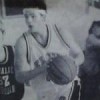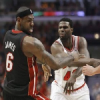Potential, Potential, Potential
Potential is enticing, if fickle. Potential is a first date. A 0-0 count in the top of the first. Potential is a stray glance or wink, a few perfectly volleyed bits of of banter between two people soon to be lovers. Potential is the essay before its written, the hazy four-line outline in the mind. Potential is the moment before the moment, where dream and reality meet, if only for an instant.
Potential is not, however, negative capability, as Keats described it: “I mean Negative Capability, that is when man ‘or woman’ is capable of being in uncertainties, Mysteries, doubts, without, any irritable reaching after fact or reason.” Potential implies a payoff, a return on investment. The hung curveball must be sent screaming to the seats. The alley must be ooped. The first date must lead to a second.
In the poem, the reward is the exploration of uncertainty itself. In fantasy sports, that irritable reaching after fact or reason is all we know. With that in mind, here are some players who’ve been blessed with the wicked kiss of potential.
Please, blog, may I have some more?










